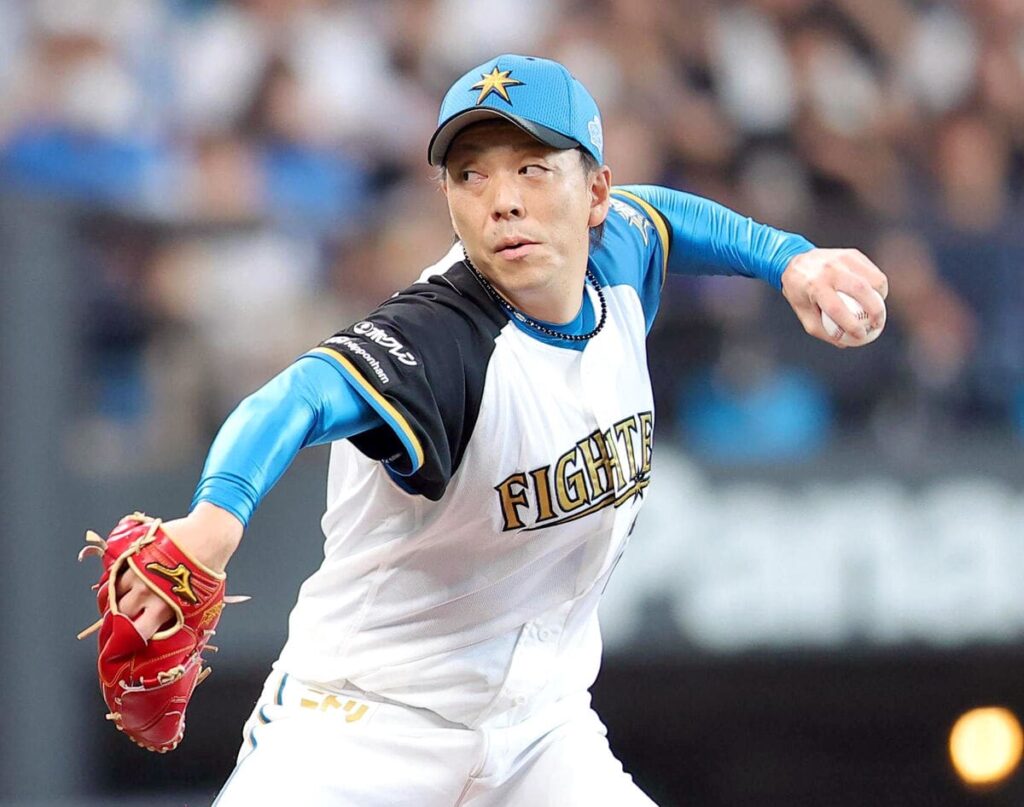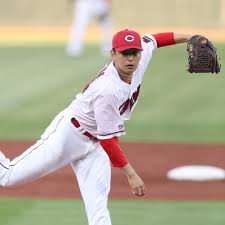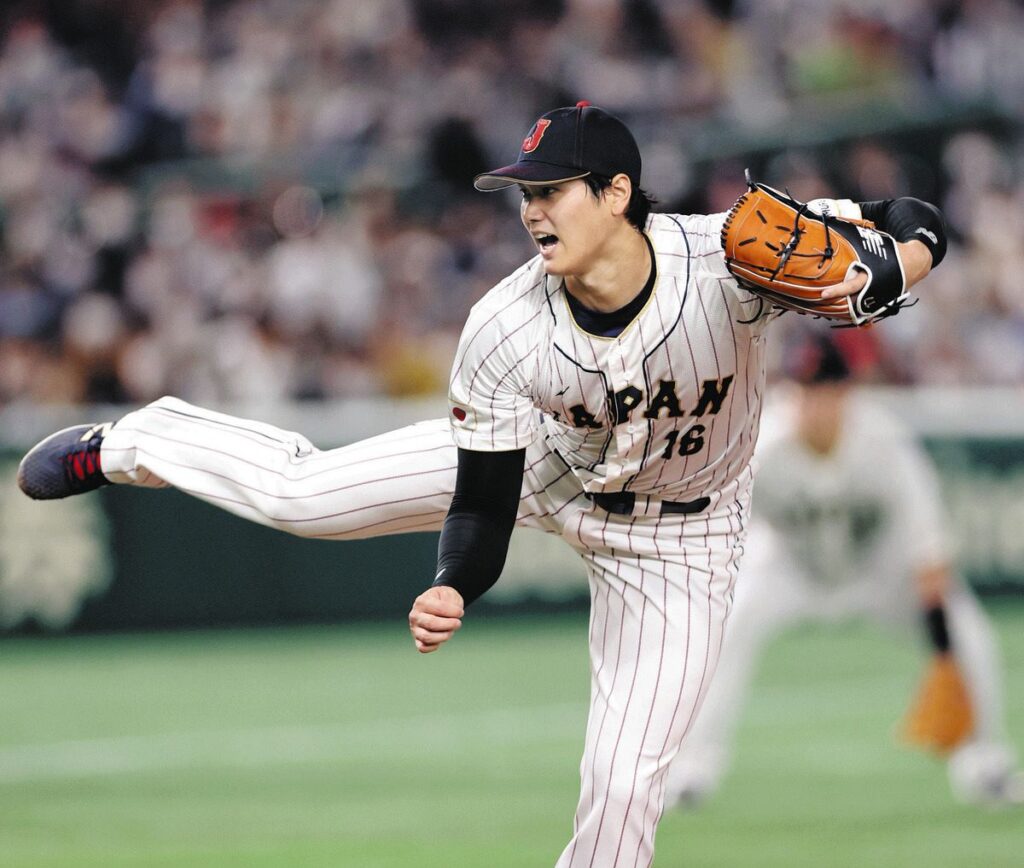
In baseball, the relief pitcher is a key player in determining the outcome of the game.
The role and importance of relief pitchers is extremely important in team strategy.
However, for many baseball fans, the specific role and importance of a relief pitcher is probably not very well known.
In this article, we will take a detailed look at relief pitchers in baseball, including their role, importance, how they are trained, and the characteristics they need to be successful.
We hope that this will help you understand how important relief pitchers are to a team and that it will help you enjoy baseball even more.
Let’s start by looking at the basic role of a relief pitcher.
目次
- 1 What is the role of a relief pitcher?
- 2 The importance of relief pitchers
- 3 How to train a relief pitcher
- 4 Characteristics of a successful relief pitcher
- 5 Relief pitcher tactics and strategies
- 6 Relief pitchers in Major League Baseball and Japanese professional baseball
- 7 Future outlook for relief pitchers
What is the role of a relief pitcher?
In a baseball game, the relief pitcher is a very important position that determines whether the team will win.
They pitch in the middle to late stages of a game and are responsible for taking over the flow of the game after the starting pitcher is replaced.
The role of a relief pitcher is not just to get outs; a variety of skills and strategies are required to contribute to the team’s victory.
Relief pitchers play different roles depending on the situation and the occasion they are called upon to pitch.
For example, they may be called in to pitch in tense situations with runners in scoring position, and be responsible for preventing the run from being scored.
They also take the mound immediately after the starting pitcher leaves the game, helping to stabilize the flow of the game.
As such, relief pitchers are a very flexible and important position, and their performance often has a direct impact on whether the team wins or loses.
The basic role of a relief pitcher
The basic role of a relief pitcher is to take the mound in the middle to late stages of a game and continue the flow of the game left by the starting pitcher.
Specifically, the roles are as follows:
- Getting Outs: The most basic role of a relief pitcher is to get outs. A relief pitcher is expected to strike out batters and not allow the opposing team to score.
- Suppressing runners: Another important role is to suppress runners left by the starting pitcher and prevent them from scoring. In particular, pitching with runners in scoring position is a stressful situation, and you need the strength to overcome it.
- Stabilizing the flow of the game: Another important role of a relief pitcher is to stabilize the flow of the game from the middle to the latter half of the game. When the game is rough or the starting pitcher leaves the game early, the relief pitcher will come on to calm the game down.
The difference between a starting pitcher and a relief pitcher
Relief pitchers have different characteristics and roles than starting pitchers and relief pitchers.
Understanding the difference between their roles is key to understanding the importance of relief pitchers.
-
Difference from starting pitchers: Starting pitchers take the mound from the beginning of the game and are usually expected to pitch about 5 to 6 innings. On the other hand, relief pitchers take the mound from the middle of the game onwards and are expected to reliably hold down short innings. Stamina is important for starting pitchers to pitch long innings, but explosiveness and concentration are important for relief pitchers to pitch short innings at full strength.
-
Differences from relief pitchers: Among relief pitchers, there are roles such as closers and setup men, and they have different roles from relief pitchers. Closers usually pitch at the end of the game and mainly pitch in save situations. Setup men are responsible for pitching the inning before the closer. On the other hand, relief pitchers pitch in a wider variety of situations and are required to maintain the flow of the game.
Understanding these roles and the differences between them makes the importance and value of a relief pitcher much clearer.
Given that the performance of relief pitchers is directly related to the team’s victory, it is important to have a deep understanding of their role.
Let’s use the latest information to understand the role of relief pitchers in modern baseball and reaffirm their importance.

The importance of relief pitchers
Relief pitchers play a vital role in the game of baseball.
Their work has a major impact on team strategy and often determines the course of the game.
Understanding how important relief pitchers are is essential to enjoying baseball more deeply.
The role of relief pitchers in team strategy
Relief pitchers play a very important role in team strategy.
They take the mound after the starting pitcher leaves the game and are responsible for stabilizing the game until the baton is handed over to a relief pitcher or closer.
For this reason, the way relief pitchers are used and the timing of their appearances are important elements in a manager’s tactics.
For example, if the starting pitcher is expected to leave the game early against a strong opposing batting lineup, a relief pitcher needs to be prepared.
Also, when the game remains close in the middle stages, relief pitchers are required to maintain the flow of the game and not let the momentum slip away to the other team.
As you can see, relief pitchers have a wide range of roles, and their performance often has a direct impact on the team’s victory.
Additionally, relief pitchers are important for maintaining a team’s strength balance.
Teams with a deep bench of relief pitchers, not just starting pitchers and closers, have an advantage when battling through a long season.
In particular, having multiple relief pitchers perform consistently can reduce the burden on the starting pitcher and ensure opportunities for the closer to pitch.
The role of the relief pitcher in determining the flow of the game
Relief pitchers play a vital role in determining the flow of a game. Their timing and performance often have a major impact on the outcome of a game.
When relief pitchers provide consistent pitching, it helps the team maintain momentum in the game and paves the way to victory.
For example, if a relief pitcher comes on to the mound in a close game, gets out of a pinch and gets through the game without allowing any runs, it gives the team momentum.
On the other hand, if a relief pitcher is hit and gives up runs, the momentum will shift to the other team, and the team will lose control of the game.
In this way, the performance of relief pitchers has a major influence on the flow of the game.
In addition, relief pitchers are required to be flexible in their response since they are called upon to pitch in a variety of situations.
For example, if a starting pitcher is taken out unexpectedly early in the game or the game goes into extra innings, the relief pitcher must perform appropriately according to the situation.
This flexibility is one of the things that makes relief pitchers so valuable.
In addition, relief pitchers also need to be psychologically strong. They often pitch under pressure, so they need to be able to make calm decisions and stay focused.
By pitching calmly in tense game situations, you can make your team feel at ease.
As you can see, relief pitchers are extremely important, and their performance directly impacts whether the team wins or loses.
Understanding the role and importance of the relief pitcher will help you enjoy the game of baseball even more.
Let’s reexamine the value and role of relief pitchers based on the latest information.

How to train a relief pitcher
Relief pitchers play a very important role on a team.
Therefore, a proper training method is required.
Being a successful relief pitcher requires specific skills and training.
In addition, using young pitchers as relievers can also be expected to help them grow.
Necessary skills and training for a relief pitcher
Relief pitchers require a specific skill set and training.
These skills are essential for a relief pitcher who takes to the mound in the middle to late innings of a game.
-
Stamina and endurance: Relief pitchers often pitch short innings at full power, but they also need to consider pitching consecutive games and long matches. Therefore, training to improve stamina and endurance is important. Incorporating running and interval training will help improve endurance.
-
Control and Accuracy: Relief pitchers need precise control. They are especially required to be able to throw with precision, as they are often called upon to pitch under pressure. They can hone their control by practicing in the bullpen and doing targeted pitching drills.
-
Mental strength: Relief pitchers are often called upon in tense situations, so they need to be mentally strong. They need mental training to overcome pressure and practice to improve their concentration during games. By adopting a psychological approach, we can develop mental strength.
-
A variety of pitches: Relief pitchers are required to be able to throw a variety of pitches depending on the situation. They need to practice effectively using multiple pitches, such as sliders, curves, and changeups. Through practice with a pitching coach, you can improve the accuracy of each pitch.
The use of young pitchers as relief pitchers and their effects
Using young pitchers as relievers is very beneficial for their development.
Pitching as a relief pitcher provides an opportunity to gain experience in a variety of situations and builds the foundation for success as a starting pitcher or relief pitcher in the future.
-
Gain experience: By pitching as a relief pitcher, young pitchers develop the ability to adapt to a variety of situations. By pitching in tight and game-changing situations, they develop a tolerance for pressure, which gives them experience to take on important roles in the future.
-
Feedback and correction: Relief appearances are a great opportunity to receive feedback from your coach. After the game, your pitches can be analyzed and improvements can be identified and applied to your next appearance. This allows young pitchers to improve their technique quickly.
-
Contribution to the team: Young pitchers who play an active role as relievers have more opportunities to contribute to the team. In particular, during consecutive games during the season or when starting pitchers are fatigued, young relief pitchers can support the team and improve the performance of the entire team.
-
Potential future pitchers: Successful relief pitchers can pave the way for future starters or closers. Experience as a reliever can enrich their careers and lay the foundation for them to develop into key members of the team.
As you can see, specific skills and training are essential to developing a relief pitcher, and using young pitchers as a relief pitcher can have a significant effect on their development.
Learn how to develop relief pitchers and their importance with the latest information to help strengthen your team.

Characteristics of a successful relief pitcher
Relief pitchers play a vital role in the game of baseball.
Therefore, there are common characteristics and skills among successful relief pitchers.
Understanding these characteristics can help players and coaches develop relief pitchers.
Common elements of successful relief pitchers
Successful relief pitchers have several common elements.
These elements are essential for consistent performance during a match.
-
High control: Successful relief pitchers always have high control. Their ability to consistently throw the ball into the strike zone reduces unnecessary walks and stabilizes the flow of the game. Daily pitching practice and technical corrections are important for improving control.
-
A variety of pitches: A successful relief pitcher has the ability to use multiple pitches. By effectively using different pitches, such as a straight pitch, slider, curveball, and changeup, it becomes easier to confuse the opposing batters. Having a variety of pitches is important to suppress the offensive attack of the opposing batting line during the game.
-
Physical strength: Relief pitchers are required to be physically strong because they often pitch consecutively or in a short period of time. Having strong stamina and endurance allows them to maintain stable performance. Strength training and running to improve stamina are important.
-
Calm judgment: Relief pitchers often pitch during tense situations during games, so they need to be calm. Successful relief pitchers can stay calm and make the right decisions even under pressure. Mental training and game experience are helpful in developing calm judgment.
The importance of mental health and how to train it
Mental strength is extremely important for a relief pitcher.
A strong mentality is required to overcome the tension and pressure during a match.
Here are some effective ways to build mental toughness:
-
Positive thinking: Always thinking positively can reduce anxiety and stress during a match. It is important to develop the habit of looking at negative situations from a positive perspective. Positive thinking leads to mental stability.
-
Visualization: Visualization is an effective way to strengthen your mental preparation. Imagine yourself making a successful throw before a game, which will boost your confidence and improve your performance in the actual game.
-
Relaxation techniques: Relaxation techniques such as deep breathing and meditation can help relieve tension and improve focus. Learning how to relax before and during a match will help you stay mentally strong.
-
Accumulation of experience: Gaining match experience will help you develop the ability to respond to various situations. By analyzing the successes and failures gained through experience and making use of them next time, you can strengthen your mental side. Experience in pressure situations is particularly important for improving your mental strength.
By incorporating these elements, you can understand the characteristics of a successful relief pitcher and strengthen your mental game.
It is important to use the latest information to find more effective training methods and improve your team’s capabilities.

Relief pitcher tactics and strategies
A relief pitcher’s tactics and strategy are important factors that can greatly influence the flow of a game.
Managers and coaches can contribute to their team’s victory by using relief pitchers effectively.
We will provide a detailed explanation on how to use relief pitchers and how to use them depending on the opposing batting lineup.
Tactics for using relief pitchers
There are several tactics for using relief pitchers.
These tactics are applied depending on the match situation and the characteristics of the opposing team.
-
Use of the setup man: The setup man takes the mound late in the game and is responsible for handing the baton to the closer. He is often in charge of the 8th inning, so this role is very important. The setup man is required to have high control and a wide variety of pitches. By maintaining the flow of the game and passing it on to the closer, he ensures a path to victory.
-
Long relief pitcher: Long relief pitchers pitch when the starting pitcher leaves the game early or when the game goes into extra innings, and pitch multiple innings. Long relief pitchers are required to have stamina and endurance, and play an important role in getting the game back on track. They are indispensable for reducing the burden on the starting pitcher and stabilizing the game.
-
Match-up relief: A match-up relief is a pitcher who pitches to give an advantage to a specific batter. It is common to use a left-handed pitcher against a left-handed batter and a right-handed pitcher against a right-handed batter. This tactic is effective in suppressing the strong hitters in the opposing team’s batting lineup. By using a match-up relief pitcher at the right time, you can control the flow of the game.
How to use relief pitchers depending on the opposing team’s batting lineup
How relief pitchers are used depending on the opposing batting lineup is extremely important in game tactics.
By selecting the optimal relief pitcher based on the opposing team’s batting lineup characteristics and the situation of the game, you can bring your team closer to victory.
-
Data-based pitching: In modern baseball, data analysis plays an important role. The tendencies and weaknesses of the opposing batting line are analyzed from data, and relief pitchers are used based on that. For example, if a certain batter is weak against curveballs, the tactic is to send a pitcher who is good at curveballs to the mound against that batter. Data-based pitching is effective in turning the tide of the game in your favor.
-
Use your relief pitchers according to the rotation of the opposing team’s batting lineup: Use your relief pitchers according to the timing of the opponent’s top and middle batting lineup’s rotation. You need to be especially careful against teams with a strong top batting lineup. When there are a lot of strong hitters, it is important to use your most reliable relief pitcher to prevent runs from being scored.
-
Flexible response according to the situation: It is necessary to flexibly use relief pitchers depending on the flow and situation of the game. For example, in a close game, you can send your most reliable pitcher to the mound to decide the game, while in a game with a large lead, you can use a young pitcher to gain experience. Flexible response according to the situation leads to improved performance of the entire team.
By utilizing these tactics and strategies, relief pitchers can help their team win.
Leveraging the latest information and data analysis to find the best reliever strategies is key to your team’s success.

Relief pitchers in Major League Baseball and Japanese professional baseball
The roles and current situation of relief pitchers in Major League Baseball (MLB) and Nippon Professional Baseball (NPB) differ based on the characteristics and culture of each league.
Understanding these differences can broaden your perspective on baseball.
The role of relief pitchers in Major League Baseball
In Major League Baseball, the role of the relief pitcher is very important.
Relief pitchers are essential to keeping the game flowing and ensuring victory.
-
Specialized roles: In major league baseball, it is common for relief pitchers to play specialized roles. Roles are clearly divided so that each pitcher takes the mound in specific situations, such as setup man, long relief, and closer. In particular, the setup man plays an important role in passing the baton to the closer, and takes the mound in the final innings of the game to close out the game.
-
Data-driven pitching: In Major League Baseball, data analysis has a major impact on pitcher selection. The weaknesses and tendencies of opposing batters are analyzed in detail, and the most suitable relief pitcher is selected based on that. For example, if a particular batter is weak against sliders, it is common to use a relief pitcher who is good at sliders against that batter. Data-based tactics are important to gain an advantage in the flow of the game.
-
High Adaptability: Major League relief pitchers are expected to be highly adaptable. They need to be able to respond quickly and flexibly to the game situation and the opposing team’s tactics. This allows them to control the flow of the game and contribute to victory.
The current situation and issues of relief pitchers in Japanese professional baseball
The importance of relief pitchers is increasing year by year in Japanese professional baseball, but several challenges remain.
Overcoming these challenges will enable the role of the relief pitcher to be further improved.
-
Diversification of roles: In Japanese professional baseball, the roles of relief pitchers have become more diverse in recent years. Roles are becoming more specialized, such as setup men and long relief pitchers, just like in major league baseball. However, in some teams, relief pitchers still often take on multiple roles, which can put a lot of strain on them.
-
Utilizing data analysis: The importance of data analysis is gradually being recognized in Japanese professional baseball, but it has not yet penetrated as far as in Major League Baseball. By adopting data-based methods and tactics, it will be possible to use relief pitchers more effectively. In particular, it is necessary to analyze the tendencies of the opposing batters and use pitchers based on that.
-
Development challenges: In Japanese professional baseball, there are also challenges with regard to the development of relief pitchers. In order to promote the development of young pitchers, it is important for them to gain experience as relief pitchers, but this often involves excessive consecutive pitching and strain. It is necessary to introduce appropriate development programs and create an environment in which young pitchers can develop without strain.
-
Depth of the player pool: Many Japanese professional baseball teams have a thin relief pitcher pool, which can put an excessive burden on certain pitchers. Having a deep player pool and having multiple reliable relief pitchers will lead to long-term team success.
By understanding the circumstances of relief pitchers in Major League Baseball and Japanese professional baseball, we can see the characteristics and challenges of each league.
It is important to review the role and training methods of relief pitchers based on the latest information and develop a strategy to maximize the team’s effectiveness.

Future outlook for relief pitchers
Relief pitchers have played a vital role in the game of baseball, and there is a lot of attention being paid to their future prospects and expectations.
The next generation of relief pitchers are required to have new skills and adaptability as modern baseball evolves.
In this chapter, we will take a detailed look at the future role and expectations of relief pitchers, and what is required of the next generation of relief pitchers.
The future role and expectations of relief pitchers
The role of relief pitchers is expected to become increasingly important in the future.
In modern baseball, it is becoming more common for starting pitchers to leave the game after the fifth or sixth inning, meaning that relief pitchers are getting more opportunities to pitch.
The trend is growing as part of a strategy to reduce strain on pitchers and maintain their long-term performance.
-
Maintaining the flow of the game: Relief pitchers take to the mound in the middle to late innings of a game and play an important role in maintaining the flow of the game. Especially in close games, the performance of relief pitchers often determines the outcome of the game, so reliable pitchers are required. In the future, we will see more relief pitchers with more specialized roles and more refined tactics for controlling the flow of the game.
-
Strategic team use: Strategic use of relief pitchers will become even more important in the future. By appropriately positioning relief pitchers according to the opposing team’s batting lineup and the game situation, it is expected that the team’s winning rate will increase. With the evolution of data analysis, more precise tactics will be possible, and the role of relief pitchers will become even more important.
-
Improve adaptability: Modern baseball requires players to adapt quickly depending on the game situation and the opponent. It is important for relief pitchers to have the flexibility to respond to different game situations and tactics. In the future, pitchers with high adaptability will be valued and are expected to play an active role as core players of the team.
What is required of the next generation of relief pitchers?
As modern baseball evolves, the next generation of relief pitchers will be required to have more skills and abilities than ever before.
By developing these skills, the next generation of relief pitchers will be able to play a vital role in helping their team win games.
-
A variety of pitches and control: The next generation of relief pitchers will need the ability to use a variety of pitches. By effectively using a variety of pitches, such as a straight pitch, slider, curveball, and changeup, it will be possible to toy with the opposing batters. In addition, the technique of accurately controlling these pitches is also important.
-
Mental strength: Relief pitchers often take to the mound during tense moments in games, so mental strength is essential. The next generation of pitchers need the mental strength to overcome pressure and the ability to make calm decisions. In order to develop this, psychological training and experience are important.
-
Physical training: In modern baseball, players are required to pitch consecutively and in a short period of time, so physical training is essential. Players are required to have strong stamina through strength training and endurance training. Strengthening physical strength is especially important in order to maintain stable performance throughout the season.
-
Data literacy: The next generation of relief pitchers will also need the ability to use data. It is important to be able to analyze the tendencies of opposing batters and your own pitching patterns from data and reflect them in your tactics. Understanding and implementing data-based strategies will enable more effective pitching.
As such, the next generation of relief pitchers will be required to have many skills and abilities.
By acquiring these skills, you will be able to adapt to the evolution of modern baseball and contribute to your team’s victory.
It is important to adopt training methods based on the latest information and with an eye toward the future prospects of relief pitchers.




